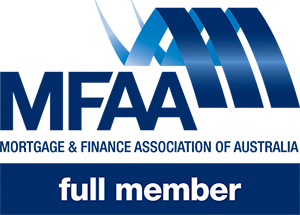The right financing term can affect your budget, cash flow, and the total cost of owning the equipment. Different types of equipment and business needs require different loan durations, so it’s important to know what factors to consider.
So how long can you finance equipment?
Typically, financing terms for vehicles and machinery range from one to seven years. The duration often varies based on factors like the equipment’s age, its type, and whether the loan is for commercial or consumer purposes.
Curious to learn more? Read on and explore essential aspects to help you understand how long you can finance equipment and make informed choices that align with your business goals.
Ready to Boost Your Business with Tailored Equipment Finance?
If you’re wanting to take your business to the next level, Woodward Finance offers tailored equipment financing solutions designed just for you. Our competitive rates and flexible terms are tailored to your unique needs, so you can acquire essential machinery without compromising your cash flow. Why wait to enhance your operational capacity or update your technology?
Reach out to Woodward Finance today, and let’s discuss how our bespoke services can support your growth ambitions. For a personal consultation, call us at 0439 313 541 or visit our Contact Us page to get started.
Factors Affecting the Time Length to Finance Equipment
The period over which you can finance equipment isn’t a one-size-fits-all figure. It varies greatly based on several critical factors. Knowing these can help you make more informed decisions that align with the financial strategies and operational needs of your business.
Age of Equipment
Newer assets (less than 10 years old) can typically be financed for up to 5 years. This longer term is possible due to the lower risk associated with newer models, which are less likely to encounter mechanical problems.
Conversely, older equipment poses a higher risk to lenders due to increased chances of breakdown and decreased collateral value, often resulting in shorter financing terms of 3-4 years.
It’s important to speak with a broker when seeking loans for older equipment. Brokers can access a range of lender options and might secure financing terms up to five years, even for older machinery. Their expertise allows them to negotiate terms that might otherwise be unavailable directly from lenders, providing you with flexible and potentially cost-saving financing options.
Type of Equipment
Lenders classify vehicles, machinery, and equipment into three distinct categories based on the asset’s expected longevity and therefore estimated future value and risk. In general, they are more inclined to extend longer loan terms for primary and secondary assets, which are perceived as lower-risk investments with better longevity and value retention.
The three categories of assets are as follows:
Primary Assets
This category includes equipment like:
- Vehicles – Cars, Utes, Vans, Buses/Coaches
- Trucks – Small and Heavy
- Trailers
- Earthmoving Equipment – Dozers, Excavators, Posit Tracks, Dump Trucks
- Mining Equipment – Crushers, Screeners
- Access Equipment – Scissor Lifts, Boom Lifts
- Essentially Most Assets with Wheels or Tracks
Secondary Assets
Examples of equipment in this category include:
- Medical/Dental/Laboratory Equipment
- Trade Tools Attachments For Earthmoving Plant Services
- Compressors and Generators
- Printing and Packaging Equipment
- Forestry Machinery
- Engineering and Toolmaking Equipment
- Woodworking and Metalworking Equipment Mechanical Workshop Equipment
- Food Manufacturing Equipment
Tertiary Assets
This category covers equipment, such as:
- Fitness Equipment
- GPS Systems
- Survey Equipment
- AV and Video Conferencing
- IT Equipment
- Solar Panels
- Fit Outs
- Cool Rooms & Spray Booths
Consumer vs Commercial Loans
Although there are a couple of lenders who can consider commercial loans over a seven-year term, most lenders have a maximum term of five years. On the other hand, consumer loans can extend up to seven years.
Businesses or commercial clients looking for longer terms might consider balloon payments to help minimise repayments. A balloon payment refers to a lump sum payment made at the end of a loan term. This type of payment structure is often used in financing agreements for assets like vehicles and machinery that might have a high upfront cost.
With a balloon payment, the borrower makes smaller monthly payments throughout the loan term. This can be advantageous for those who need lower monthly payments during the loan term, as a high percentage of the principal is deferred until the end.
At the term’s end, the borrower has these options: pay off the remaining balance of the loan in one large lump sum, refinance for another term to pay down the balloon, or sell the equipment and finance a new replacement item. Balloon payments can be as high as 50% of the original loan amount, depending on the loan term.
Final Thoughts
Deciding how long to finance equipment is crucial for your business’s financial strategy. It means understanding details like the equipment type, how long it will last, and whether the loan is for business or personal use.
Choosing the right financing term can ease cash flow issues, making it easier to grow your business smoothly. It’s smart to seek advice from finance experts who can tailor solutions to fit your business goals.




